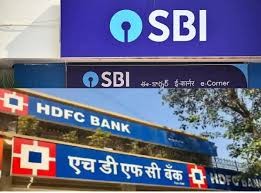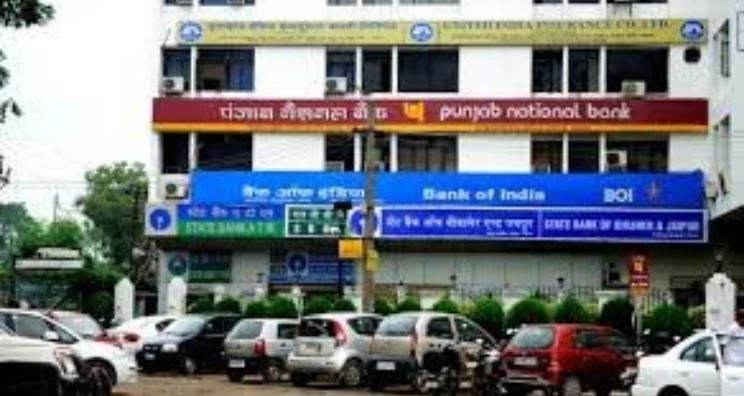Over the last few days in December, as 2024 was approaching, there were too many phone calls and text messages. Predictably, most of them were to pass on New Year wishes. But there were a few that had nothing to do with the New Year. They were anxious calls and curious messages, from people on my contact list and even outside it. They wanted to know whether their money was safe in their banks.
What was the provocation?
The Reserve Bank of India’s (RBI) latest announcement on the Domestic Systemically Important Banks. Three banks continue to feature on the list — the State Bank of India (SBI), HDFC Bank Ltd and ICICI Bank Ltd.
“If these three are ‘important’ banks, what about others? Is my money safe with them?” That’s the question they had.
The answer is yes, all scheduled commercial banks are safe. Since economic liberalisation of 1991, not a single bank has been allowed to fail. The rescue act has been different from different entities, depending on the context and the size but depositors have not lost money.
Let’s focus on the systemically important bank architecture in India. There are five buckets, 1-5 — 5 being the most important and 1 the least important. The position of the bank decides on its common equity tier-I requirement as a percentage of risk weighted assets. The SBI belongs to bucket 4 (up from 3) and HDFC Bank bucket 2 (up from 1). ICICI Bank remains in bucket 1, the entry level. There’s none in buckets 5 and 3.
The RBI had started disclosing the names of these banks in 2015; the respective bucket depends on their systemic importance scores focussing on four key aspects — size, interconnectedness, substitutability, and complexity. In the first two years, only SBI and ICICI Bank were included in the framework. From 2017, HDFC Bank made its entry.
The current update is based on March 31, 2023, data. The growing importance of HDFC Bank in the system, after the merger of HDFC Ltd with it, has raised its stature by one notch.
The genesis of this framework is an October 2010 recommendation of the Financial Stability Board (FSB), an international body that monitors and makes recommendations about the global financial system. It recommended that all member countries (the G-20 major economies and more) must put in place a framework to reduce risks attributable to systemically important financial institutions.
Traditionally, large banks are perceived to be “Too Big to Fail”. This perception creates an expectation of government support for them at the time of distress, putting moral pressure on the government. This is one side of the story. On the other side, these banks enjoy certain advantages over other banks while raising money in the form of deposits and bonds.
The perceived expectation of government support may encourage such banks to take higher risks. Also, it can reduce market discipline, create competitive distortions, and become a threat to financial sector stability. The way to tackle this is to put in place additional policy measures for dealing with the systemic risks and moral hazard posed by them. That’s the genesis of this.
In November 2011, the Basel Committee on Banking Supervision released a framework for identifying the global systemically important banks and how much capital they require to absorb loss. That’s how the requirement of additional capital comes in.
In India, it’s between 0.20 per cent and 0.80 per cent of risk weighted assets, depending on their scale — the higher the scale, the higher the requirement. For systemically important banks on a global scale, the additional capital requirement is far higher.
Different exposures of banks have different risk weights and capital requirements. For instance, in India, the banks’ investments in government bonds have zero risks and unsecured personal loans have the highest risks (125 per cent) at this point.
Here, banks are selected for computation of systemic importance based on the analysis of their size as a percentage of gross domestic product (GDP) — beyond 2 per cent. But, that’s only one parameter. Other parameters are size, interconnectedness, lack of readily available substitutes or financial institution infrastructure, and complexity.
What are the systemically important banks on a global scale?
The 2023 list features 29 banks, one less than the 2022 list. The changes in banks’ placement in different buckets is a reflection of changes in their business activities even as their businesses in different geographies under different regulators contributed the maximum to the movements of score.
JP Morgan Chase tops the list (bucket 4), followed by Bank of America, Citigroup and HSBC (bucket 3). There are 10 banks in bucket 2, including three Chinese banks — Agricultural Bank of China, Bank of China and China Construction Bank — and Barclays, BNP Paribas, Deutsche Bank and Goldman Sachs, among others. Finally, bucket 1 has 15 banks. The list includes Morgan Stanley, Standard Chartered, Societe Generale, Sumitomo Mitsui GD, Wells Fargo, et al. Like in India, here too none features in the top tier — bucket 5.
The identification of the systemically important banks is to ensure that such banks always have the additional capital to absorb losses and the government doesn’t need to step in to rescue any such entity to safeguard the system. A post-Lehman Brothers collapse creation, this substituted the Too Big to Fail concept.
When it comes to supervision, the RBI looks at the banking industry — all banks, big and small — through a different prism. Earlier it was CAMELS (capital adequacy, asset quality, management, earnings, liquidity and system and control); now it is RBS (risk-based supervision). Originally it was called CAMEL and “S” was added in 1997. Internationally, the “S” stands for sensitivity (for market risks).
Since banks are heterogeneous in terms of size, nature of business models and risk-taking ability, under CAMELS they were grouped into five categories — SBI, other public sector banks, old private banks, new private banks, and foreign banks.
In the RBS regime, the banks have been re-grouped on homogeneity. For instance, Citibank, Standard Chartered and HSBC had earlier been grouped as foreign banks; under the RBS, they have migrated to “medium-sized banks”.
Since the focus of CAMELS inspection was on earnings, among other things, it could have encouraged a bank to show high profitability, earned at the cost of higher business risks, to get a higher rating. Also, the CAMELS approach seemed to be backward-looking and compliance-based in contrast to proactive and forward-looking RBS.
Until 2016, 15 banks were covered by RBS; by April 2020, all banks have been brought under this.
Indeed, the systemically important banks are treated in a different way (there’s an extra layer of safety) but when it comes to supervision, all banks — big, medium and small — get the same treatment by the RBI.
Finally, the systemically important bank classification is no comment on how secure is depositors’ money in other banks. The bigger bank requires higher capital. This is particularly relevant when the economy is growing well and bank credit growth is rising to support the growth.
The depositors have nothing to worry about. Sit back, relax and enjoy the higher rates on your deposits, for now.
This column first appeared in Business Standard
The writer, a Senior Adviser to Jana Small Finance Bank, writes Banker’s Trust every Monday in Business Standard.
Latest book Roller Coaster: An Affair with Banking
Twitter: TamalBandyo
Website: https://bankerstrust.in



